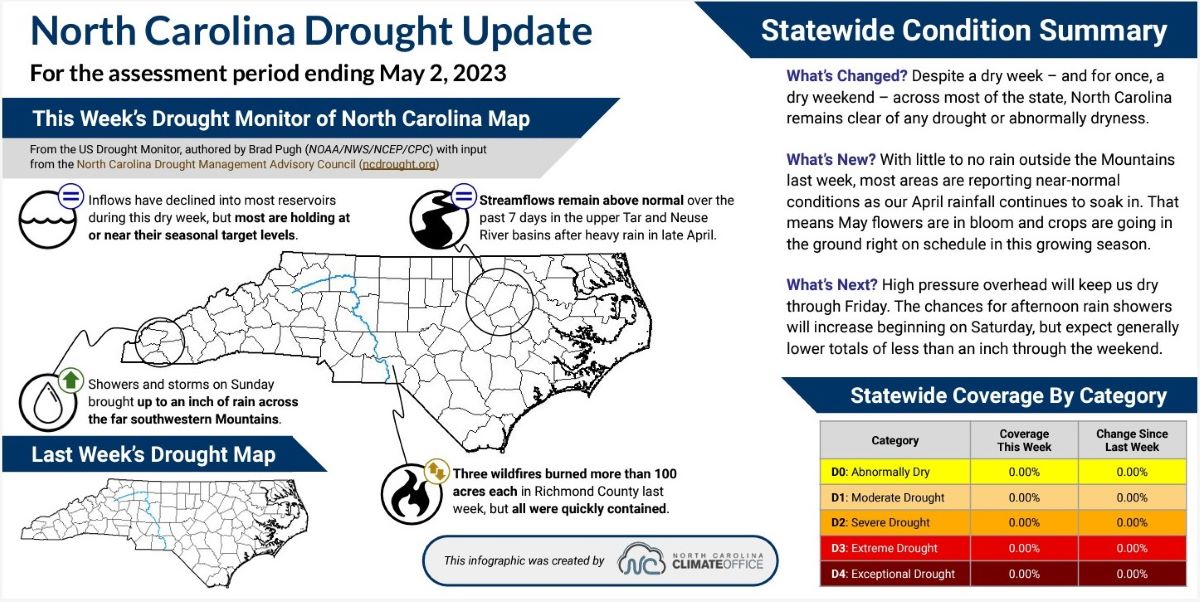
For the first time in a two years, the entire state is free of drought or abnormally dry conditions.
The consistent and heavy showers in April has led to a clear drought map since May 4 on the U.S. Drought Monitor for all 100 counties, according to the North Carolina Drought Management Advisory Council.
Supporter Spotlight
“This is the first time the state’s drought map has been clear of any drought and dryness in more than two full years – since April 13, 2021,” said Corey Davis, N.C. Assistant State Climatologist and council member, in a statement.
This year’s dry March led to the entire central and eastern areas to be considered abnormally dry or in moderate drought but the regular, heavy rains in April improved conditions.
Heavy rains during the last two weeks helped to return to the normal range, according to the climate office.
In the last two years, North Carolina has experienced several periods with more than 80% of the state having conditions ranging from abnormally dry to severe drought.
The variables that determine drought are rainfall, streamflow, groundwater levels, climate, the amount of water storage in reservoirs, soil moisture, and the time of year.
Supporter Spotlight
“The seasonal forecasts call for near-normal to above-normal rainfall for much of the southeastern U.S. through mid-summer,” said Barrett Smith, Senior Service Hydrologist with the National Weather Service in Raleigh.
“Longer-range prospects for normal to above-normal rainfall are also favorable through the fall and winter months given the expected development of El Nino conditions, which favor more active weather patterns and wetter conditions across the southeastern U.S. These are, however, seasonal averages, and there will certainly be periods of drier than normal conditions at times,” Smith added.
The council is a collaboration of drought experts from various government agencies in North Carolina, Virginia and South Carolina, and organized by the state’s Department of Environmental Quality’s Division of Water Resources.
Members of the council meet weekly and submit their drought condition recommendations to the National Oceanic and Atmospheric Administration, the U.S. Department of Agriculture, and the National Drought Mitigation Center for updates to the U.S. Drought Monitor.
The Drought Management Advisory Council considers impacts to the environment when it recommends changing conditions to the state’s drought map. These conditions are closely monitored and can rapidly change, especially during the hot summer months, which bring about higher evaporation rates.
A map of the nation’s drought conditions is released at 9 a.m. every Thursday. To view North Carolina’s drought map, visit www.ncdrought.org. To view the U.S. drought map, visit http://droughtmonitor.unl.edu/.
NOAA has recently developed a drought/climate page for each state, including North Carolina, with facts, statistics, forecasts and other drought-related data.








